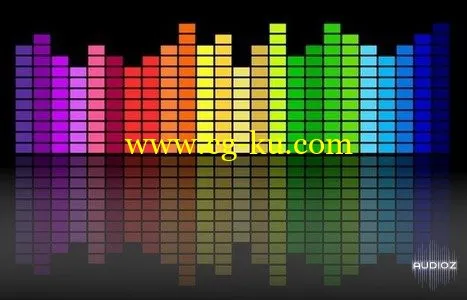
密码: 9wzh
P2P 24 MARCH 2015 | 1.75 GB
Audio Signal Processing for Music Applications
In this course you will learn about audio signal processing methodologies that are specific for music and of use in real applications. You will learn to analyse, synthesize and transform sounds using the Python programming language.
Instructors
Prof Xavier Serra
Universitat Pompeu Fabra of Barcelona
Prof Julius O Smith, III
Stanford University
About the Course
Audio signal processing is an engineering field that focuses on the computational methods for intentionally altering sounds, methods that are used in many musical applications.
We have tried to put together a course that can be of interest and accessible to people coming from diverse backgrounds while going deep into several signal processing topics. We focus on the spectral processing techniques of relevance for the description and transformation of sounds, developing the basic theoretical and practical knowledge with which to analyze, synthesize, transform and describe audio signals in the context of music applications.
The course is based on open software and content. The demonstrations and programming exercises are done using Python under Ubuntu, and the references and materials for the course come from open online repositories. We are also distributing with open licenses the software and materials developed for the course.
Course Syllabus
Week 1: Introduction; basic mathematics
Week 2: Discrete Fourier transform
Week 3: Fourier transform properties
Week 4: Short-time Fourier transform
Week 5: Sinusoidal model
Week 6: Harmonic model
Week 7: Sinusoidal plus residual modeling
Week 8: Sound transformations
Week 9: Sound/music description
Week 10: Concluding topics; beyond audio signal processing
Recommended Background
The course assumes some basic background in mathematics and signal processing. Also, since the assignments are done with the programming language Python, some software programming background in any language is most helpful.
神奇23侠2015三月| 916 MB
前方的样品很高兴地宣布,DJ哈里森的向后/倒退。把艺术家和制作人一样,j-dilla,精神?uestlove,Madlib,D'Angelo和Herbie Hancock,向后/倒退创建一个自己的世界的声音。在这一独特的收藏,生产者/多instrumentatlist,DJ哈里森股票数百环槽,旋律和和弦的想法,不同生产选择音效作为灵感跳跃点提供获得创造的果汁流动的。
主要特点
超过300的超常规s-vibey环。鼓,贝司,吉他,钢琴,罗德,打击乐合成器,器官,多。
3种格式。Kontakt 5,机器,和WAV。
吨的影响。过滤器,扭曲,压缩机,钻头破碎机,延时和混响。(中国版)
采样鼓包与循环无缝融合。使用相同的记录和鼓的回路设置,我们采样的DJ哈里森的试剂盒能够与鼓循环混合。
多麦克风采样鼓。将单个麦克风组合在鼓包上,以你自己的喜好,并应用于每个单独的通道。(中国版)。
MPC鼓触发器。与触摸一个按钮,打开不同的MPC踢腿和陷阱的样品,准确记录触发回路鼓槽。把它们混合在你喜欢的搅拌机里。
移调乐器上或下半步,高达1度。
节奏列表
扰流器:
关于录音过程:
devonne哈里斯(又名DJ哈里森)在工作室花了几天时间。用各种各样的仪器设置和准备去,他在录音室里弹了每一个乐器。他开始在不同的节奏和感觉鼓槽。然后,也许他会放下和习惯还是罗德的一些和弦。他继续配音并填写每件直到他确信那是“全”,它可以。结果是34可笑的常规,s-vibey,和独特的故事充满了鼓舞人心的旋律,弦,和艺术思想的肯定,获得灵感。
关于DJ哈里森
制片人,作曲家和多乐器DJ哈里森(又名devonne Harris)同样在家玩严重爵士他在嘻哈音乐在他的工作室。本集团成员(屠夫棕色出现在新专辑的数量伟大的爵士乐小号尼古拉斯佩顿)和里士满,联合创始人VA唱片jellowstone记录(记录的ropeadope子)。除了作为一个成员的棕色屠夫,他的工作,爵士和嘻哈领域,艺术家喜欢尼古拉斯佩顿,罗伯特glasper,Count Bass D,约翰d'earth,Amaury Acosta的统一,NOBS铜管乐队,ohbliv。他与屠夫的工作也在轨道上听到了50分,“50是我最喜欢的”。